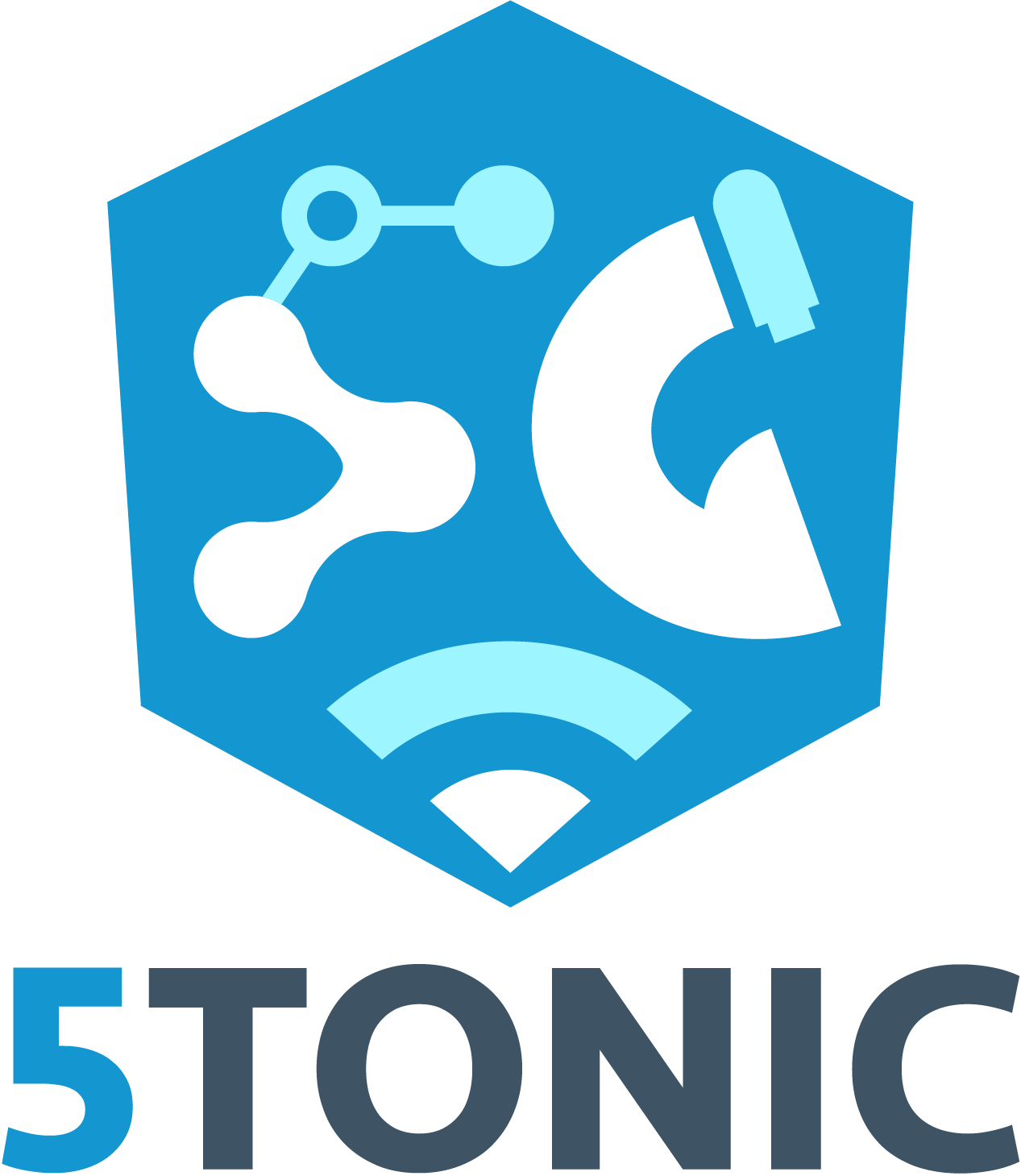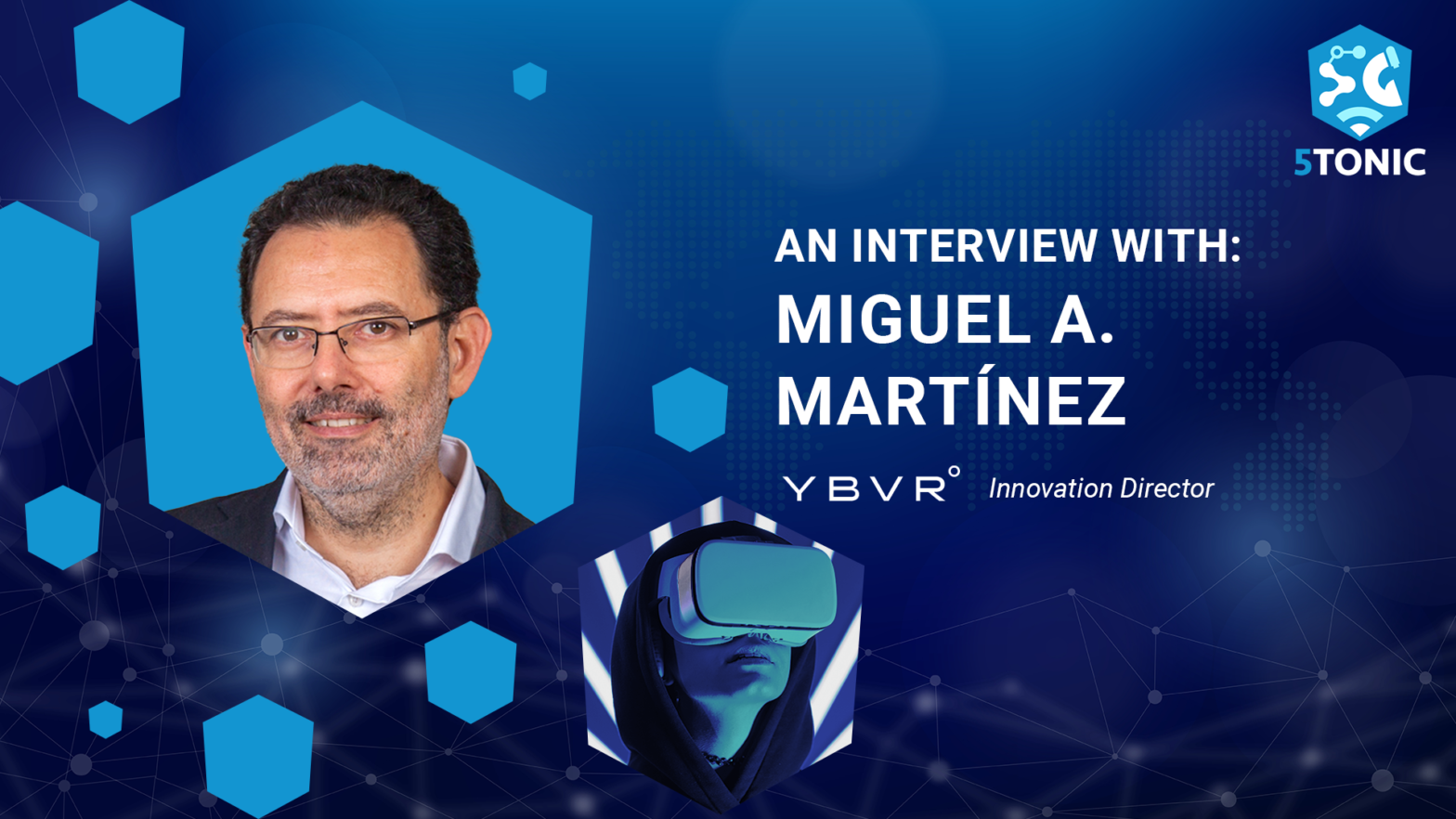Interview with Miguel A. Martínez, Innovation Director at Yerba Buena VR (YBVR)
YBVR is a company dedicated to the application of virtual reality (VR) and mixed reality (MR) technologies to user experiences in music, sports, or tourism sectors.
Given the recent incorporation of Yerba Buena VR (YBVR) as a collaborator of 5TONIC, we interviewed Miguel A. Martínez, Director of Innovation at YBVR.
Throughout the interview we discovered who Miguel Ángel is, both professionally and personally, and learn about YBVR’s trajectory and experience in the technology and telecommunications sector. In addition, we learnt more on the functions that YBVR performs in its collaboration with 5TONIC, how is its relationship with the other members, what projects they are working on and how Miguel envisions the future of Virtual Reality.
Who is Miguel A. Martínez and what has been your professional career? Tell us about yourself.
I am a telecommunications engineer. I have worked all my professional life in the business communications sector, and perhaps the longest period has been almost 20 years working at Telefónica, in the design of the international network, so I have experience in the growth of the Internet, the evolution of international voice networks and fibre optic and submarine cables.
That has perhaps been the most extensive part. Also, during my last years at Telefónica I was very involved in innovation projects, such as the Telefónica content distribution networks project and in unified communications. So, this is what has allowed me to get to know very well all the difficulties of the internet as a global network and the restrictions of bandwidth and distribution of massive content such as video. On the other hand, it allowed me to understand the difficulties of bringing video and voice technology to the IP world, which now seems the most normal thing in the world, but 10 years ago it was a technological challenge.
What is YBVR? Tell us a bit about its history in Spain.
The company was created in the United States at the end of 2016. The founders were 3 Spaniards and 1 Mexican. Some of them lived in the United States and that is why the company was set up there to take advantage of and follow in the footsteps of the American financing system and the American start-up system, which differs somewhat from the European one. But a few months later, in early 2017, the Spanish company was founded. The vocation was to have a strong presence in Spain, where we now have development and operations teams and also the European customer service part.
The company’s challenge is to solve the problem of internet streaming of high-quality immersive video. Immersive video is 360-degree video that completely surrounds the viewer or at least 50% of the view, and for that to be seen in quality, you need brutal bandwidths, which don’t scale on the internet, if you want to make a massive consumer experience. So, what we do, the core of the company, is the development of video optimisation techniques that allow us to maintain the highest quality with a scalable bandwidth that today’s home connections can support.
What is the purpose of the collaboration between YBVR and 5TONIC? What role does each one play?
5TONIC offers us a laboratory where we can test the networks of the future. Because of what I have told you about what the company does, we depend a lot on the quality of the network and the functionalities it offers us. So right now, we provide all our services mainly on fixed networks, on fibre networks, and that imposes certain limitations on us, and we see that the networks of the future, 5G, the evolution of 5G or 6G, offer us great opportunities to gain flexibility and to expand, extend and enrich our use cases. So, the collaboration with 5TONIC is clear. 5TONIC offers us a laboratory where we can test things that do not exist in commercial networks today, and we also help that network to evolve according to the needs of our use case, which is very demanding in that respect.
Could you give us an example of a solution or case study developed within the framework of the collaboration with 5TONIC?
Around 2018 we were testing in 5TONIC an immersive tourism experience with 5G. This was within the 5G EVE project, a European project where Segittur, Ericsson and UC3M collaborated, and that was our first contact with 5TONIC in collaboration. Then we have also been working with another European project, in collaboration with 5TONIC, called 5G INDUCE, which in this case is an industrial application, where a self-guided vehicle is monitored in a factory through 5G and with immersive video.
In this way, the operator can see what is happening around the vehicle, if it stops for some reason, if there is a box that has fallen or is caught on a cable or anything else and has a direct view of what is happening. The challenge there has been to get as little latency as possible so that the operator can see what is happening in real time.
As a partner of 5TONIC, have you found synergies with other relevant companies in the industry that are also part of the ecosystem of the laboratory? Could you give us an example?
Yes, of course, 5TONIC has become a meeting point for different agents, such as Ericsson, for example, in the manufacture of network equipment. Also, UC3M, which provides us with a lot of vision and know-how about the evolution of networks. Thanks to 5TONIC, we have contacted Fivecomm, which manufactures modems for 5G, and also with ABB, the former ASTI, which in this case are the ones that provided the self-guided industrial vehicles we were working with.
Focusing on virtual reality functionalities, what applications could be developed based on these technologies and what functionality could they have within different industries?
Yes, the fundamental thing we work with is precisely virtual reality with immersive video, which gives you the experience of being teleported to the place where the camera is and being able to have the same vision that the camera sees. Immersive cameras are really a set of cameras, each one looking in a different direction, that allow you to have a complete view around you. So, what possibilities does a next-generation network, such as 5G, the evolution of 5G or 6G, offer us? Well, it gives us a lot of flexibility in terms of mobility. It allows us to put the camera anywhere, we don’t need to have a cable, a fibre that connects it to the world, but we have a radio connection that gives us a lot of flexibility.
When it comes to covering sporting events, for example, that take place in open spaces, or covering a concert in a non-urban area, these types of tools give us a lot of flexibility. Also, the improvements in bandwidth, both upstream and downstream, also help us to make the service more flexible. The ability of new generation networks to rely on virtual computing environments at the edge of the network, which is edge computing, also allows us to take equipment out of the event venue to leave it on the network, and that gives us great flexibility when it comes to deploying and implementing the service.
What extended reality-based projects are being or will be developed in conjunction with 5TONIC and other members and collaborators?
We are continuing with the 5G INDUCE, which I was talking about earlier, about this industrial application of immersive video monitoring. The project is not yet finished, and we are still working on 5TONIC, and we are also in a new European project called TRIALSNET, with Ericsson, Telefónica and UC3M, where we are studying more possibilities for the evolution of the network. Although it is not yet commercially available and is coming in the future, it is a project that has started this year, which lasts 3 years, and with which we are working at full capacity right now.
How do you envision the future development of this technology?
Well, we work in an environment that is almost more about the future than the present. Now virtual reality glasses are not very popular in Spain, but they are starting to become so in other countries such as the United States, Taiwan, South Korea and Japan. And although not yet in Europe, they are making great strides in their evolution every time new, lighter, and more comfortable glasses are released. We see that the industry is advancing, and with it, the devices, both the glasses and the cameras.
Immersive cameras are therefore evolving and will be instrumental in the transformation of these services. Our vision is that a new media complementary to radio or television will be created where the immersive experience will be an additional option, a steppingstone. People will not just be satisfied with hearing what is happening there, or seeing what is happening there, but they will have the option of being there, that kind of telepresence experience. We believe that this will take over as a new audio-visual media.
What new applications based on virtual reality could we expect in 5 or 10 years?
Of course, right now it’s a new medium. We are like when television started. When television started, the radio announcer, which is what was used until then, stood in front of a camera and read the weather report or the news on a piece of paper in front of the camera. Nowadays you see a news programme and television has nothing to do with that. A whole new language has been developed, a whole new narrative associated with the audio-visual medium, which is not just the audio of the radio. Well, right now we are in a similar situation. A new audio-visual medium has been developed, which is immersive video, and we have to find a new narrative, a new way of telling things, which requires inventing things that do not yet exist.
What projection do you think YBVR will have within the technological ecosystem at a local and European regional level?
We are currently occupying a new space where there are not many people working on this kind of things. This also forces us to complete the end-to-end value chain, from putting the cameras on the basketball field, for example, as we now have a project with the Euro league basketball league, where we offer an immersive game every day, to making the application that people will download onto their glasses or smartphone to follow the event.
I understand that this will evolve as the industry grows. The big production companies will take on the part of camera production, the big content providers will take on the part of interaction with the user, and the role that we will occupy will be, within the technological ecosystem, that of provider of the technology that enables this experience, and our idea is to remain there as a reference provider.

